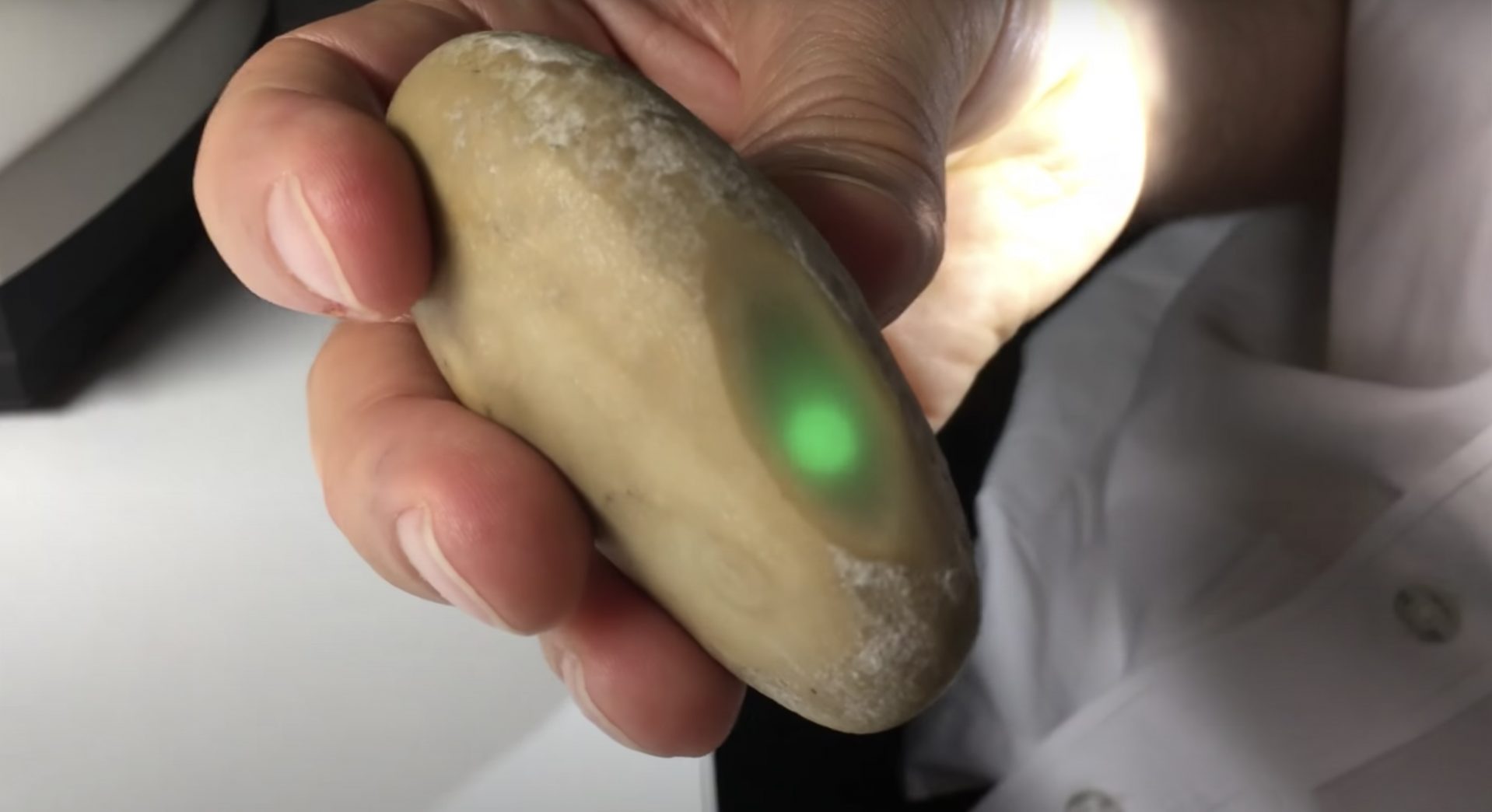GRS Alert: Unusual phosphorescent pebbles identified as synthetic aggregates
Phosphorescent pebbles are presented in the market as natural rounded pebbles (3.53 density) possessing extraordinary properties such as green phosphorescence when exposed to a strong light source and patchy blue to green fluorescence in short- and long wave UV-light (Figure 1), again with green phosphorescence (no blue).
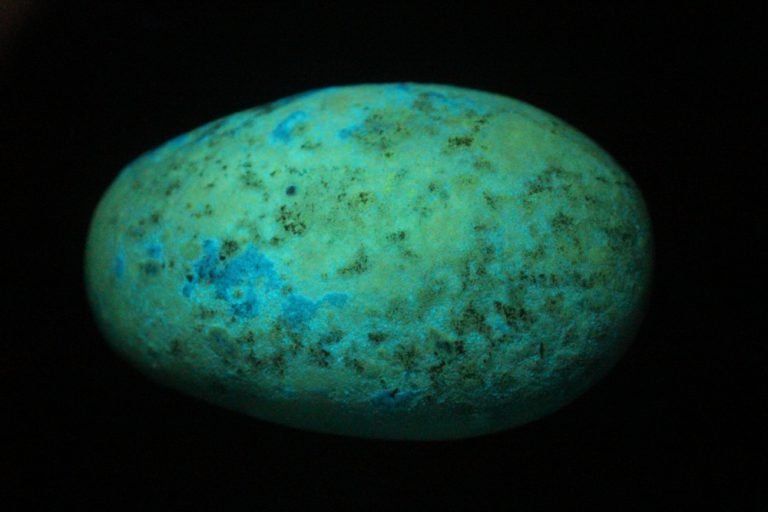
Such items appeared multiple times in the last two years at our laboratories (see explanatory movie clip). They are sold at very high prices of thousands of US dollars per piece or sometimes even per carat. The first specimen we have tested initially appeared in Burma (Myanmar) in 2014. Similar material appeared as carvings on the Chinese market according to an article published on the website of the Gems & Jewelry Trade Association of China.
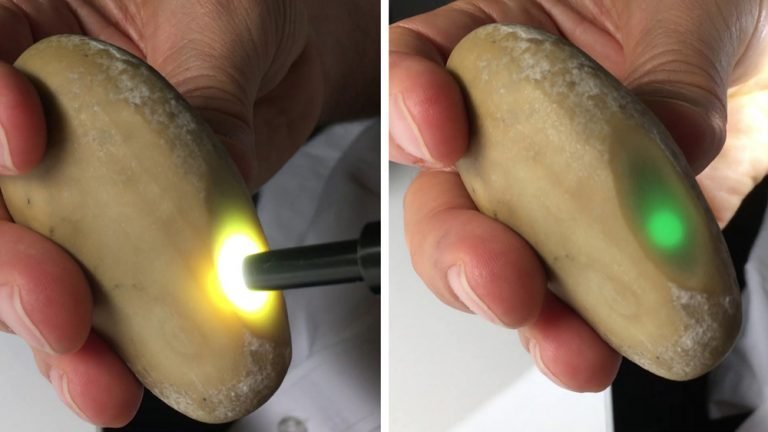
Initially, we thought this is an erratic problem within the industry and not worth alerting the public about. But since this type of material continued to reappear at our laboratory, we believe it is necessary to alert the public with an official GRS Alert. Our research indicated that the synthetic material had been purposely tumbled and aged through a chemical alteration process with the intention of mimicking a naturally weathered product (Figure 3).
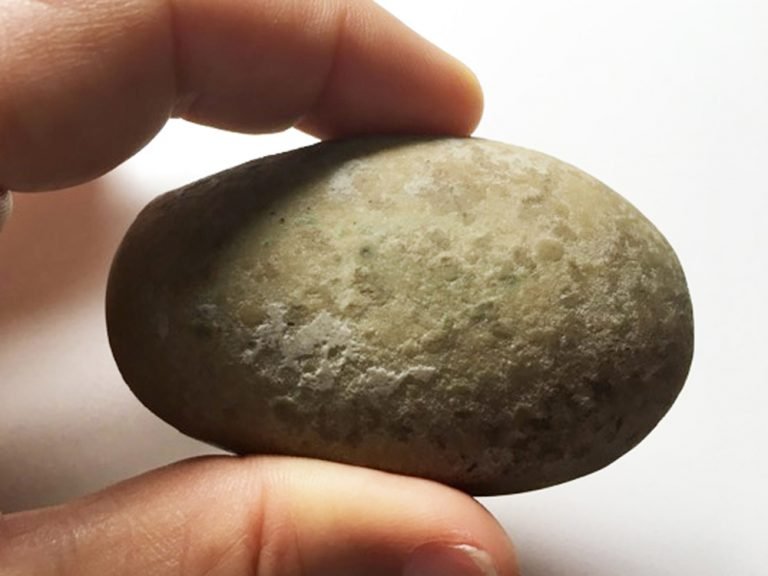
We had the material analyzed by XRD through the University of Bern, Switzerland by Prof. Thomas Armbruster to identify it structurally, then measured it using ED-XRF analysis at our GRS laboratory for chemical composition.
Results
The analyses showed that this material is a synthesized aggregate material (Fig. 4). The material was first synthetized in Russia in 1976 as Sr4Al14O25 and published by Nadezzhina (1976), Kristallografiya, 21, 826. The literature from Chinese researchers (Chengkang et al. 2006) confirmed that this type of material was later doped with Europium (Eu) on Strontium (Sr) position, which creates phosphorescence.
Detailed XRD analyses revealed that the material we had tested also contained a minor secondary synthetic phase of SrAl2O4 in addition to the material mentioned above, actually identifying the pebbles as an aggregate of two structurally different synthetic substances. Additional ED-XRF analyses confirmed the elements Strontium (Sr) and Aluminum (Al) but showed that instead of Europium (Eu), the major REE element was Dysprosium (Dy).
No traces of radioactivity were found when tested with a Geiger counter.
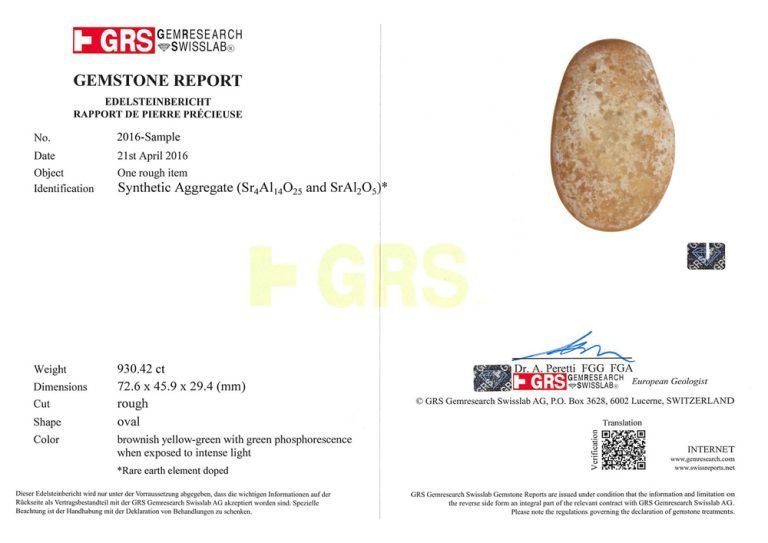
Explanatory Video
Literature
Shen Hao Qinglong, Qing Shi Cheng, Ni Cui Wenxiu. 2011. Discussion of Synthetic luminous gem crystal structure and luminescence mechanism study (Translated from Chinese). [ONLINE] Available at: http://www.jewellery.org.cn/news_nr.aspx?ClassID=152&ContentID=3321&CID=2&Maticsoft=74&Ms=152. [Accessed 25 April 2016].
Chengkang Chang, Zhaoxin Yuan and Dali Mao (2006): Eu2+ activated long persistent strontium aluminate nano scaled phosphor prepared by precipitation method. Journal of Alloys and Compounds 415, p. 220-224.
Nadeshina T. N., Pobedimskaya E. A., Belov N.V. crystal structure of strontium aluminate [Sr4Al4O2Al10O23][J], Kristallografiya, 1976 (21): 826-828.
© 2023, GRS GemResearch Swisslab AG

